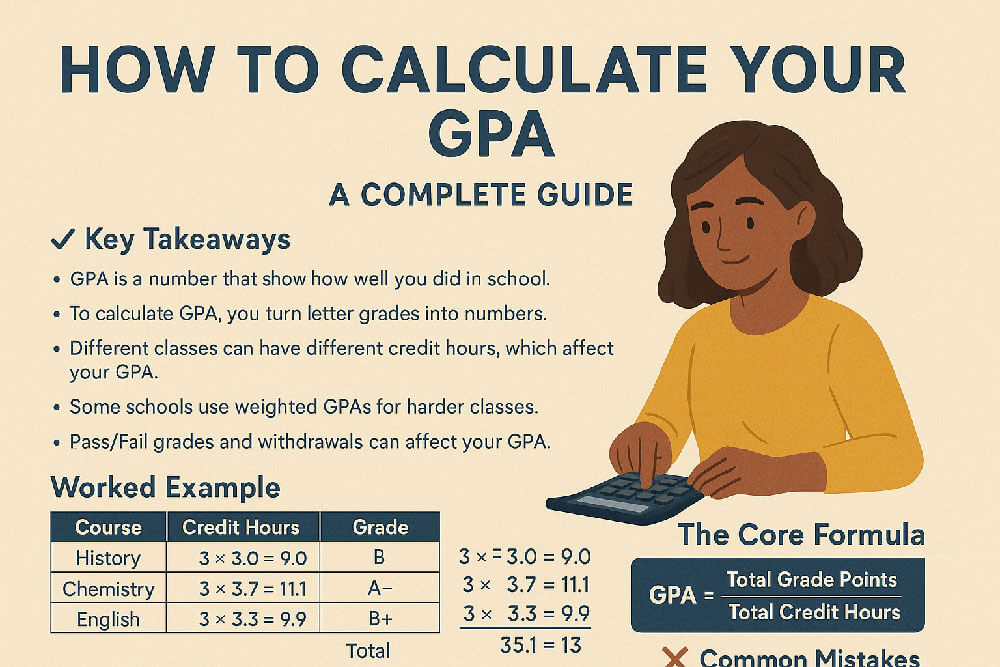Key Takeaways
- Suspension is a Pause, Not an End: Suspension is a temporary break from school. You have a clear path to return if you take the right steps.
- Prove Your Readiness: The best way to get reinstated is to take classes at a community college. You must earn good grades (B's or higher) to show you are ready.
- Document Everything: Your reinstatement petition needs proof. Get letters from doctors, therapists, or employers to explain what happened.
- Make a Concrete Plan: Do not just promise to "try harder." Create a detailed academic plan. Show which courses you will take and what campus resources you will use.
- Meet All Deadlines: Reinstatement petitions have strict deadlines. Missing a deadline means an automatic denial.
Understanding Why Suspension Happens: From Probation to Pause
A school places you on academic suspension when you do not meet its standards. This is different from academic probation. Probation is a warning period where you can still take classes. Suspension means you must take a mandatory break from the university. This usually lasts for one semester or a full year. The school wants you to solve the problems that led to poor grades.
Universities have rules for good standing. These rules are often called Satisfactory Academic Progress (SAP). Failing to meet SAP leads to probation and then suspension. You can learn more about A Student's Guide to Satisfactory Academic Progress (SAP). The specific rules can change by location, so it helps to review the Academic Probation Rules by State.
The First Step: A Clear Look at Your GPA
You must understand why your grades were low. Your Grade Point Average (GPA) tells this story. Before you can plan your return, you need to know exactly where you stand. A simple mistake in your calculations can change your understanding. Use a college GPA calculator to see your exact number.
It is important to learn how to calculate GPA correctly. This knowledge helps you create a realistic plan. Many students make simple errors. Be sure to review common GPA calculation errors to avoid so your plan is built on solid ground. Understanding the GPA formula guide is the foundation of your academic comeback.
Proving You Are Ready: Success at Another School
Words are not enough to get you reinstated. You need to show the school you are ready for college-level work. The best way to do this is by attending a community college during your suspension. Taking 6-12 credits and earning a GPA of 3.0 or higher is powerful proof. This action shows you are serious about your education.
These new grades show a positive academic trend. You can use a transfer credits GPA integrator to see how these new courses could affect your overall GPA. This fresh start is a chance to build strong study habits. Think of it as a new beginning, similar to when you used a high school GPA calculator to plan your future.
Building a Strong Reinstatement Petition
Your reinstatement petition is your case for a second chance. It must be professional, honest, and detailed. A strong petition has three parts:
- A Personal Letter: Explain what went wrong without making excuses. Describe the specific steps you took to fix the issues.
- Supporting Documents: This is your evidence. Include medical records, letters from therapists, or transcripts from the community college courses you took.
- An Academic Action Plan: This is a detailed map for your success.
Your action plan should list the exact courses you will take. If you failed classes, your plan should show when you will retake them. A repeat course GPA recalculator can help you see how retaking courses will change your GPA. You should also create a strategy for any past issues, like using a GPA planning for incomplete grades tool if you had Incompletes.
Planning Your Comeback: Setting New GPA Goals
Once your petition is approved, the real work begins. You must have a clear goal for your first semester back. Do not overload yourself with classes. A lighter course load of 12 credits is often a smart choice. Your goal is to earn a high semester GPA to prove you belong.
Use a semester GPA calculator to set a target. For example, you can see how getting all B's or better will affect your overall academic standing. This helps you monitor your progress week by week. As you succeed, you can track your improvement with a cumulative GPA calculator. Planning is the key to avoiding past mistakes.
Your New Status: Life on Conditional Reinstatement
Returning from suspension means you are on conditional status. This is like being on probation with strict rules. You must meet specific requirements during your first semester back. These often include:
- Earning a minimum semester GPA (usually 2.5 or higher).
- Completing all your registered credits.
- Meeting regularly with an academic advisor.
Failure to meet these conditions often leads to a second, permanent dismissal. Your goal should be to do more than just the minimum. Aim high. Use a Dean's List eligibility checker to set a goal for academic excellence. Striving for top marks shows the university you are a new student. Success in your first semester back can put you on a path toward meeting graduation honors GPA requirements.
Advanced GPA Strategies for Long-Term Success
Staying in good academic standing requires consistent effort. You need strong study habits and a clear understanding of how your school calculates your GPA. Some schools use different GPA scales for advanced courses. It is helpful to understand the difference between a weighted vs. unweighted GPA.
Your success depends on your daily actions. Simple changes can make a big difference in your grades. Explore new study tips for better grades to find what works for you. There are many ways to measure academic performance, so a GPA scale comparison can provide useful context for your goals.
Special Cases: International Students and GPA Conversion
If you are an international student, you may face an extra challenge. You might need to convert grades from your home country's system to the 4.0 scale used in the United States. This is a critical step for both reinstatement and future applications. Your school's admissions office can help you with this process.
Each country has a unique grading system. For example, the process for a UK class system grades to 4.0 GPA conversion is different from converting grades from China or Nigeria. Using an international GPA converter guide is essential for an accurate application.
Frequently Asked Questions (FAQ)
What is the difference between academic suspension and dismissal? Academic suspension is a temporary, required break from school with a clear path to return. Academic dismissal is a permanent removal from the university. After a dismissal, you often must wait several years and meet stricter requirements to be considered for return.
What is the most important part of a reinstatement petition? Taking courses at a community college and earning high grades is the single most effective action. It provides concrete proof that you are academically prepared to return. Strong supporting documentation for the original issues is also critical.
Will I get financial aid after I am reinstated? Not automatically. Academic suspension often happens at the same time as losing financial aid for not meeting Satisfactory Academic Progress (SAP). You must complete both the university's reinstatement process and a separate SAP appeal to restore your financial aid.
Can I appeal a suspension immediately? Yes, but immediate appeals are rarely successful. You should only appeal immediately if you can prove that specific, documented circumstances beyond your control caused the poor grades and that those circumstances are now completely resolved.








